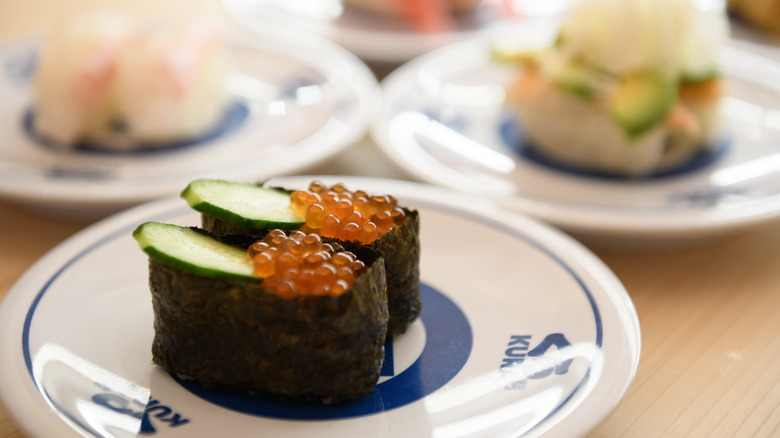The Efficient Way Plates Are Cleaned At Sushi Restaurants In Japan
Kaitenzushi or conveyor belt sushi restaurants offer an expedient and amusing way to have sushi delivered to your table. Plates of sushi (often covered in clear lids) revolve around the restaurant on conveyor belts, allowing customers to choose their favorite varieties. At most of these establishments, they don't even have waitstaff to clear your plates. So, when you're done eating your sushi, you simply pop the plate into a slot at your table, and it journeys down a water slide or tunnel of rushing water to the massive dish-washing station in the kitchen.
The plates are often color-coded to indicate price, and proper etiquette is to refrain from touching the plates (unless you are taking them to eat) and not to put used plates back on the belt. Considering how kaitenzushi offers convenience and interaction between the food and customer, this streamlined method of getting the dirty dishes where they need to go really isn't a surprise.
Automated dishwashing offers efficiency and fun for customers
At some kaitenzushi restaurants in Japan, there is typically a touch screen at the table that displays a count of how many dishes are entered into the slot, making it easy to keep track of the number of plates of sushi the customer has selected. After you slide your plates through the slot, they travel through a tunnel system full of water and pass by a section that has ultraviolet lights for sterilization.
Once they make it through, an employee loads the dishes into an automatic dishwasher that scrubs each plate with a rotating brush, detergent, and hot water. Then, the clean dishes get returned by hand to the conveyor belt for the chefs to plate. In another example of extreme efficiency, a large number of dishes can be washed with only one employee needed to load and remove the plates.
It should also be noted that for larger dishes, like bowls for udon and ramen, and cups for tea or water, are placed inside the tunnel by the servers after the customers leave. They do this by opening the hatch where the slot is completely, and then those dishes make their way to the rest of the small plates in the kitchen.

